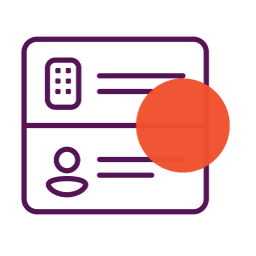Advertiser & Editorial Disclosure
If you’re thinking about driving for a ridesharing service, your first question is probably, “How much can I make as an Uber or Lyft driver?” That’s an important question. After all, you want to know whether it’s worth your time and energy.
But income is only one side of the equation. But like any type of self employment, there are expenses that reduce the amount of income you’ll earn. Unless you’re earning money under the table, with no expenses, the amount you bring in is not the amount you get to keep.
Here are five costs to keep in mind if you are thinking of driving for a ridesharing service.
1. Insurance
One of my friends who drives for Uber was in a serious car accident. Her car was nearly totaled, and it may be weeks before her vehicle is repaired. With her car out of commission, her ridesharing income ground to a halt. (And with no paid sick leave or disability pay, it was an especially difficult financial hit.)
But she may consider herself lucky in that she was not driving for Uber at the time. Had she been, her passenger may have been injured, and it could have created more complications, depending on her insurance coverage.
Uber provides some coverage if you are online with Uber at the time of the accident, and you’re at fault. In that case, Uber states that “coverage provided by Uber is at least $50,000 in injury liability per person with $100,000 in total liability per accident and $25,000 in property damage liability per accident.”
But if the other driver is at fault (as in my friend’s case), then Uber says, “you may make a claim against their insurance. Your personal insurance policy may also cover you in this situation.” What if the other driver isn’t insured, or is underinsured? Or if you didn’t tell your insurance company you would be driving for a ridesharing service? It could become a complicated and expensive mess.
Lyft’s insurance coverage appears to be more extensive. On its website it explains what may happen in several different scenarios. Lyft says on its website: “In the event of an accident (once you have accepted a ride or are transporting a passenger) with a driver who is uninsured or underinsured and is ultimately at fault for bodily injury caused to you and/or your passengers, our UM/UIM coverage will apply up to $1M per accident.”
Nevertheless, it’s important that you always talk to your agent or insurance company before you start driving for a ridesharing service. You’ll likely have to adjust your insurance, and it will probably be more expensive, but you want to be adequately covered. Some insurers offer policies that cover both personal use and ridesharing use; or you may need a rider on your existing policy.
2. Fuel
You’ll likely be filling your tank more often when you start driving others around and you may soon find yourself obsessing over fuel prices and the miles per gallon you’re getting.
Obviously a more fuel-efficient vehicle should cost less in fuel than one that gets low mileage per gallon, but even then, short-haul trips with lots of stops and starts (the type you’ll likely get) will result in lower fuel efficiency. Idling — which you may have to do more often than usual as you wait for your riders — and frequent acceleration and deceleration can affect mileage significantly. Conversely, “driving sensibly” (rather than driving aggressively) can save 26 cents to $1.04 per gallon according to the U.S. Department of Energy.
Uber also offers a couple of tools to help cut fuel costs. The company’s Fuel Finder app will help drivers find nearby gas stations and compare costs. (This feature is also available from Gas Buddy and most online map applications.) In addition, eligible drivers can use the Fuel Card (a MasterCard) to get 1.5% off fuel purchases, plus additional bonuses that may be available at participating stations. Lyft offers Shell’s Fuel Rewards program that lets drivers earn earn $1 per gallon in Fuel Rewards savings each time the driver completes five rides, up to 50 rides in the first 30 days.
Keep in mind you may be able to find a credit card that offers higher cash back or bonus points on fuel purchases. A different card may be a better deal, depending on your spending habits, so be sure to shop around.
3. Taxes
When you work for Uber you are an independent contractor. This means no taxes will be withheld from your earnings by the company. Instead, if you earn $600 or more, the service should send you a 1099-Misc form at the end of the year reporting your income for the year. (That doesn’t mean earnings of less than $600 are tax exempt; you are still supposed to report them.) The IRS will also get a copy of the 1099, lest you hope it slips under the radar.
You are responsible for including that amount in your taxable income, and for paying applicable state and federal taxes on that income. (Note in some states, like New York and Nevada, Uber collects sales taxes and excise taxes.)
And here’s the tax trap that often surprises those who start a business: FICA. When you have a job, your employer will deduct FICA — the Medicare Tax (1.45% of wages) and Social Security Tax (6.2% of wages) — directly from your pay. In addition, the employer matches those deductions. But when you are self-employed you are the employer, and must pay 12.4% Social Security tax and 2.9% Medicare tax. That can really eat into the projected earnings you’re counting up in your head.
There is one tax upside — you can report expenses to reduce the taxes you owe. That means you’ll want to make sure you accurately and completely track and document those expenses. There are apps that can help, but it’s important to set up a system from the beginning to make things easier come tax time. Using a business credit card for purchases related to your side gig can make it easier to identify deductible expenses at tax time. If you’ve never applied for a business credit card, here are the answers to some frequently asked questions about how business credit cards work compared to personal cards. Applying for a card will almost always require a personal credit check and card issuers differ in how they report business credit card information to the credit bureaus (here’s a chart explaining their different policies). You can check your personal and business credit profiles for free at Nav to see where you stand.
Finally, the IRS generally requires you to pay estimated taxes quarterly when you are self-employed. If you don’t pay enough, there may be penalties. And if you pay late, you may pay a penalty, even if you get a refund. If you’ve never been self-employed before, there will be a learning curve as you adjust to paying your own taxes. You may want to consult with a tax professional as you get started so you aren’t hit with a huge tax bill come April. The IRS and your state tax agency could opt to place tax liens on you or your business if you don’t pay your tax bill.
4. Depreciation & Repairs
As you put more miles on your car, its value goes down. This article shares some eye-opening examples of the total cost of a car per mile, running from 48 cents per mile (for a Prius) to $1.84 per mile (for a Porsche Panamera).
If you still owe money on a car loan, your car may be “upside down” (where you owe more than the vehicle is worth) for a longer period of time. You may need to look into GAP insurance if you can’t afford to foot the bill in the case of an accident that totals your vehicle.
And of course, more miles can mean more frequent maintenance, whether that’s a simple oil change and tire rotation or more expensive repairs like brakes. You’ll want to budget for those expenses so they don’t get neglected and lead to even bigger repairs. Plus, you may not be able to put off repairs you’d normally just live with. You may be willing to put up with that loud grinding sound that comes from the dashboard every once in awhile, but your passengers might not, and that can hurt your overall business with lower ratings.
5. The Wrong Mindset
OK, this isn’t technically a dollars-and-cents cost, but the wrong mindset can take a big toll on your bottom line. A side gig or “side hustle” is, in the end, a small business. And as a small business owner, you need to develop the skills that make small business owners successful.
You need to track revenue and expenses, and use that information to continuously help you determine which strategies (such as times and locations to drive) are most effective and profitable. You need to develop good customer communication strategies, and find ways to improve the customer experience; a clean car, plus amenities like water, mints and music are often appreciated, as is advice on restaurants and local happenings.
Going into any kind of small business blindly can be expensive and result in frustration. But learn from this experience and you may even find you’re ready to launch another business of your own.
This article was originally written on November 15, 2017 and updated on December 10, 2020.


Have at it! We'd love to hear from you and encourage a lively discussion among our users. Please help us keep our site clean and protect yourself. Refrain from posting overtly promotional content, and avoid disclosing personal information such as bank account or phone numbers.
Reviews Disclosure: The responses below are not provided or commissioned by the credit card, financing and service companies that appear on this site. Responses have not been reviewed, approved or otherwise endorsed by the credit card, financing and service companies and it is not their responsibility to ensure all posts and/or questions are answered.